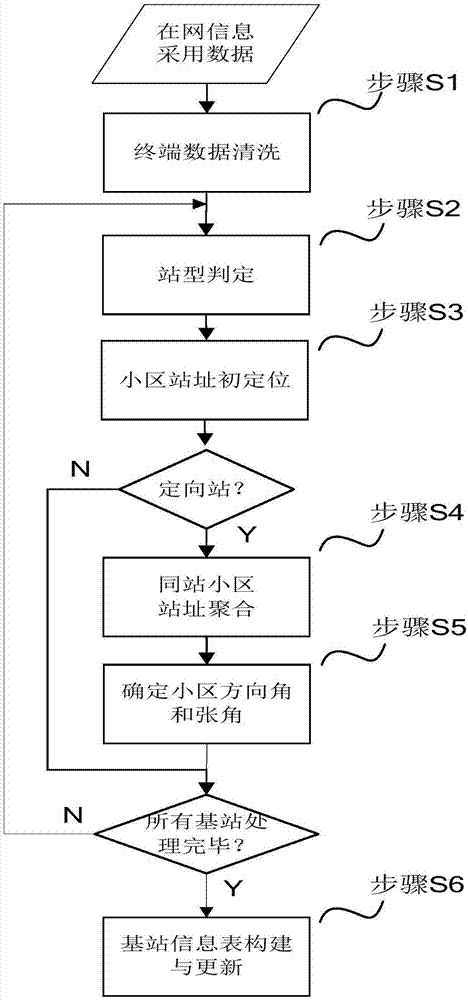Wireless cell information detection method based on semi-supervised clustering
A semi-supervised clustering and wireless cell technology, applied in wireless communication, electrical components, network planning, etc., can solve problems such as large time delays, data errors, and inability to guarantee the timeliness of base station information tables, so as to avoid manual errors, Avoid the effect of time delay
- Summary
- Abstract
- Description
- Claims
- Application Information
AI Technical Summary
Problems solved by technology
Method used
Image
Examples
Embodiment Construction
[0065] The invention provides a method for detecting information of a wireless cell by using wireless network information collected by a user intelligent terminal.
[0066] The specific steps are described in detail as follows:
[0067] Input: wireless network online information sampling data collected from user smart terminals
[0068] Collect user online information sampling data under a specific wireless network (such as LTE network) from the interface API provided by the operating system of the terminal through the App deployed on a large number of user smart terminals. The information contained should include: date, Time, area number (TAC for LTE network), base station number (eNodeBID for LTE network), cell number (CellID for LTE network), terminal latitude and longitude, positioning method, positioning accuracy, current location Names of provinces and cities, field strength (RSRP for LTE network, linear value, unit of mW), signal quality (RSRQ for LTE network), user id...
PUM
 Login to View More
Login to View More Abstract
Description
Claims
Application Information
 Login to View More
Login to View More - R&D
- Intellectual Property
- Life Sciences
- Materials
- Tech Scout
- Unparalleled Data Quality
- Higher Quality Content
- 60% Fewer Hallucinations
Browse by: Latest US Patents, China's latest patents, Technical Efficacy Thesaurus, Application Domain, Technology Topic, Popular Technical Reports.
© 2025 PatSnap. All rights reserved.Legal|Privacy policy|Modern Slavery Act Transparency Statement|Sitemap|About US| Contact US: help@patsnap.com



